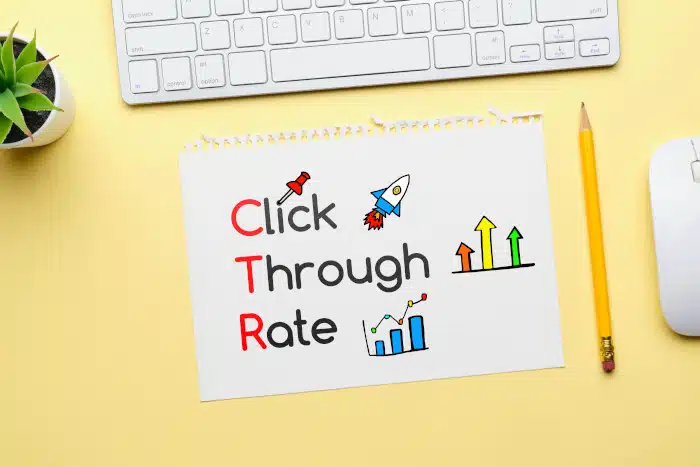Key Takeaways
- Engagement is Key to Social Media Success: Simply having a social media presence isn't enough. Building strong relationships with your audience through consistent interaction is crucial for achieving success.
- Identify and Address Engagement Issues: Low interaction rates, declining followers, one-way communication, low click-through rates, negative comments, inconsistent posting, lack of content variety, and unclear brand voice are all indicators of poor social media engagement.
- Understand and Connect with Your Audience: Knowing your audience's preferences and needs is essential for creating content that resonates. Building a strong connection with your audience through valuable content and consistent engagement is vital.
- Prioritize Interaction and Response: Encouraging interaction, responding promptly to comments, and leveraging user-generated content helps build a strong community around your brand.
- Consistency, Variety, and Analysis: Maintaining a consistent posting schedule, offering diverse content formats, and regularly analyzing performance data are crucial for optimizing your social media strategy.
Social media has transformed the way we communicate and share information, making it an essential tool for brands and influencers alike. However, many make common mistakes by underestimating its importance. Simply being present on social media is not enough; strong interaction is essential for building meaningful relationships and achieving success. In this blog, we will examine the reasons behind poor engagement strategies to provide actionable insights that can help you enhance your social media presence and build a more engaged community.

What Signs Indicate a Poor Social Media Engagement Strategy and Why They Happen
We start by exploring common indicators that suggest a lack of engagement and the reasons behind these issues. This will provide some insight into how brands experiencing these issues can refine their approach for better results.
1. Low Interaction Rates (Likes, Comments, Shares) Compared to Your Follower Count
Problem: Missed Connections
When your posts receive low interaction rates despite a significant follower count, it indicates a disconnect between your content and your audience’s interests. This gap means you are missing valuable opportunities to engage with potential customers. Low engagement suggests that your followers refrain from participating in conversations or sharing their thoughts, which hinders the development of meaningful relationships. Without these connections, your brand risks becoming just another unappreciated name, leading to missed chances for conversion and loyalty.
2. Declining Follower Growth or High Unfollow Rates
Problem: Reduced Brand Awareness
A decline in follower growth or a high unfollow rate signals that your social media strategy is failing to attract and retain an audience. This stagnation in growth can severely limit your brand’s visibility, as each follower represents a potential connection to other users. If followers feel disengaged or disinterested in your content, they are more likely to unfollow you, further decreasing the reach of your brand. As awareness diminishes, your ability to promote products or services effectively is compromised, making it harder to compete in an increasingly crowded market.
3. Mostly One-Way Communication (You Post, but Rarely Respond)
Problem: Competitive Disadvantage
One-way communication reflects a lack of engagement and interaction with your audience, placing your brand at a competitive disadvantage. In an era where consumers expect brands to engage with them actively, failing to respond to comments and messages can alienate potential customers. This disengagement suggests that you do not value their input or perspectives, making it easy for competitors who prioritize interaction to gain the upper hand. Furthermore, brands that fail to foster two-way communication risk losing market share as consumers gravitate toward companies that listen and respond to their needs.
4. Low Click-Through Rates on Your Shared Links
Problem: Lower ROI
When shared links consistently yield low click-through rates, it indicates that your content is not compelling enough to drive traffic to your website or landing pages. Unfortunately, this lack of engagement is wasted resources spent on creating content that doesn’t resonate with your audience. Low click-through rates can signify that your messaging misaligns with audience interests or that your calls-to-action are ineffective. Consequently, without driving traffic effectively, the return on investment (ROI) for your social media efforts diminishes, leading to dissatisfaction with the effectiveness of your marketing strategy.
5. Negative Comments or Customer Service Issues Left Unaddressed
Problem: Lost Customer Loyalty
Failing to address negative comments or customer service issues can significantly harm customer loyalty and brand reputation. When customers feel ignored or undervalued, they may choose to take their business elsewhere, leading to a loss of potential advocates for your brand. Unresolved issues can escalate quickly in the public eye, damaging trust among current and prospective customers alike. A lack of responsiveness not only alienates unhappy customers but also sends a message to others that you may not take their concerns seriously, which undermines long-term loyalty and engagement.
6. Inconsistent Posting Schedule
Problem: Inconsistent Brand Presence
An inconsistent posting schedule can confuse followers and diminish their interest in your brand. When content is sporadic or lacks a predictable rhythm, it becomes difficult for followers to engage with your posts regularly. This inconsistency may lead followers to forget about your brand altogether or perceive it as unprofessional and unreliable. As a result, you may struggle to maintain engagement levels and lose opportunities to build lasting relationships with your audience, ultimately hindering overall growth and visibility.
7. Lack of Variety in Content Types (e.g., Only Text Posts)
Problem: Reduced Engagement Potential
A lack of variety in content types restricts the engagement potential of your social media strategy. If you primarily share text posts without incorporating images, videos, infographics, or interactive content, you risk boring your audience and failing to capture their attention. Diverse content caters to different preferences among followers and can lead to higher levels of interaction. When engagement is limited due to monotonous content, it becomes challenging to build connections with your audience and keep them invested in your brand’s story.
8. No Clear Brand Voice or Personality in Your Posts
Problem: Weak Brand Identity
A lack of a clear brand voice or personality in your social media posts can lead to a weak identity and diminished recognition among followers. Without a consistent voice, it becomes difficult for audiences to relate to or connect with your brand on a personal level. This disconnect can make it challenging for followers to understand what your brand stands for, which weakens their emotional investment in your products or services. As a result, customers may struggle to distinguish your brand from competitors, leading to reduced loyalty and engagement over time.
Understanding these signs of a poor strategy and their root causes is helpful for businesses aiming to improve their online presence. While identifying problems is an important first step, the real value lies in knowing how to address these challenges and build a strong social media strategy. In the next section, we will explore best practices for enhancing your social media engagement.
Ways to Have a Better Social Media Strategy
Now that we have examined the pitfalls of ineffective social media strategies, let’s turn our attention to actionable steps for improvement. The following section will outline key strategies and tactics to boost your engagement, helping you create meaningful connections with your audience and drive better results for your brand.
1. Know Your Audience
Understanding your audience is the foundation of any successful social media strategy. By gaining insights into who your followers are, including their demographics, interests, and behaviors, you can tailor content that resonates with them. This knowledge enables you to create targeted messages that speak directly to their needs, which is critical in a crowded digital landscape. Conducting surveys, analyzing engagement metrics, and monitoring audience behavior are effective ways to gather this information. As a result, you can develop more effective marketing strategies that lead to improved customer insights, allowing you to engage your audience on a deeper level and build lasting relationships.
2. Create Valuable Content
Creating valuable content is crucial because it positions your brand as an authority in your niche while providing your audience with useful information. Engaging and informative content not only educates but also entertains or solves problems for your followers, making it more likely that they will share it within their networks. When your audience perceives your content as valuable, it enhances your credibility and fosters trust, encouraging potential customers to engage with your brand. This organic sharing of useful content results in increased brand awareness as more people become familiar with your offerings and expertise, ultimately leading to broader visibility for your brand.
3. Be Consistent
Consistency in posting is essential for maintaining a steady presence in the fast-paced world of social media. Regular updates keep your brand top-of-mind for followers and build anticipation for new content. By establishing a posting schedule, you help ensure that your audience knows when to expect new updates, which encourages ongoing engagement. Additionally, consistency helps reinforce your brand voice and visual identity across platforms, making it easier for followers to recognize and remember your brand. As a result, maintaining a consistent posting schedule leads to higher engagement rates, as followers are more likely to interact with content they regularly see in their feeds.
4. Encourage Interaction
Encouraging interaction with your audience transforms them from passive observers into active participants in your brand community. By inviting responses through questions, polls, and discussions, you foster a sense of belonging and investment among your followers. This engagement creates a two-way dialogue that strengthens the relationship between your brand and its audience, making followers feel valued and connected. When users feel that their opinions matter and are welcomed in discussions, it leads to a growing community of loyal supporters who are more likely to engage regularly with your brand and advocate for it within their own networks.
5. Respond Promptly
Promptly responding to comments and messages is vital in creating a positive customer experience. In today’s fast-paced digital environment, customers expect quick replies from brands they engage with. When you respond swiftly and authentically, it conveys that you care about your followers’ opinions and are attentive to their needs. This level of engagement enhances overall customer satisfaction, making followers feel acknowledged and appreciated. Satisfied customers are more likely to become repeat buyers and recommend your brand to others, resulting in improved customer loyalty and a stronger reputation.
6. Leverage Visual Content
Visual content plays a significant role in capturing attention in today’s information-saturated environment. Posts that include high-quality images, engaging videos, or infographics tend to attract more attention than text alone. Visuals not only enhance the aesthetic appeal of your social media presence but also improve message retention among audiences. They help convey
complex information quickly and effectively, making it easier for users to engage with your content. By strategically leveraging visual content, brands can significantly boost their engagement rates, resulting in more likes, comments, shares, and overall interaction with their posts.
7. Utilize User-Generated Content
User-generated content (UGC) serves as an authentic endorsement of your brand and is a powerful tool for fostering trust among potential customers. When followers create and share content about their experiences with your products or services, it builds credibility and encourages others to engage with your brand. UGC not only showcases real-life applications of your offerings but also fosters a sense of community as followers feel connected through shared experiences. By actively sharing user-generated content on your channels, you can increase engagement while driving traffic to your website as followers seek out the original content or products highlighted by their peers.
8. Go Live
Utilizing live streaming features offers a unique opportunity for real-time interaction with your audience. Live sessions create an immediate connection that can enhance engagement and make followers feel more involved with your brand. Whether hosting Q&A sessions, product demonstrations, or behind-the-scenes tours, live interactions humanize your brand and create memorable experiences that resonate deeply with viewers. These real-time engagements can differentiate you from competitors who may not prioritize such interactions. As a result, going live provides a competitive advantage by establishing stronger connections with your audience and encouraging them to return for future events.
9. Run Contests and Giveaways
Running contests and giveaways generates excitement among followers while encouraging participation and engagement with your brand. Such promotions create a sense of urgency that motivates users to share the contest within their networks, broadening your reach significantly. Contests can attract new followers who were unaware of your brand previously while also rewarding loyal customers for their engagement. This increased visibility leads to heightened brand awareness as more people become familiar with what you offer. Overall, contests provide an effective way to engage existing followers while drawing in new ones through shared enthusiasm.
10. Analyze and Adapt
Regularly analyzing your social media performance is crucial for identifying what strategies work best and which areas need improvement. By tracking engagement metrics such as likes, shares, comments, and click-through rates, you can gather valuable insights into customer behavior and preferences. This data-driven approach allows you to refine your strategies continuously based on what resonates most with your audience. As you adapt your content and tactics accordingly, you can enhance overall effectiveness and improve customer insights over time, leading to campaigns that better meet the needs of your target audience.
11. Personalize Your Approach
Personalizing interactions with your audience is key to making followers feel recognized as individuals rather than only numbers on a page. Tailored content speaks directly to different segments of your audience based on their preferences and behaviors, demonstrating that you understand their unique needs. This level of personalization fosters deeper connections between customers and your brand, making them feel valued and appreciated. As a result, personalized interactions significantly improve customer retention rates since satisfied customers will remain loyal to a brand that understands them.
12. Integrate Social Media Across Channels
Integrating social media across various channels reinforces your brand identity and strengthens credibility among customers. A cohesive presence ensures that customers encounter consistent messaging regardless of where they interact with your brand—be it on social media platforms, email newsletters, or websites. This uniformity builds trust by establishing familiarity; customers are more likely to engage with brands they recognize across multiple touchpoints. Consequently, this integrated approach enhances brand reputation by fostering loyalty among customers who appreciate consistency in their interactions with your brand across all platforms.
By tackling common missteps and embracing proven best practices, brands can build vibrant communities that boost visibility and drive real business outcomes. Remember, effective social media is not static – it requires ongoing refinement based on audience feedback and performance data. Companies that prioritize authentic interactions and remain responsive to changing trends will see their efforts rewarded with increased loyalty, reach, and influence.
If your marketing efforts are not reaching their desired outcomes, or you need assistance with your social media, whether that is post creation, engagement, or planning, do not hesitate to contact Techna. Let us help you invest in clarity and create a pathway toward sustainable growth and success in your digital marketing initiatives.
This has been part of our 10 Common Mistakes You May Be Making In Digital Marketing And How To Fix Them Series. To learn more about the other 9 mistakes you may be making and how to fix them, check them out here.



